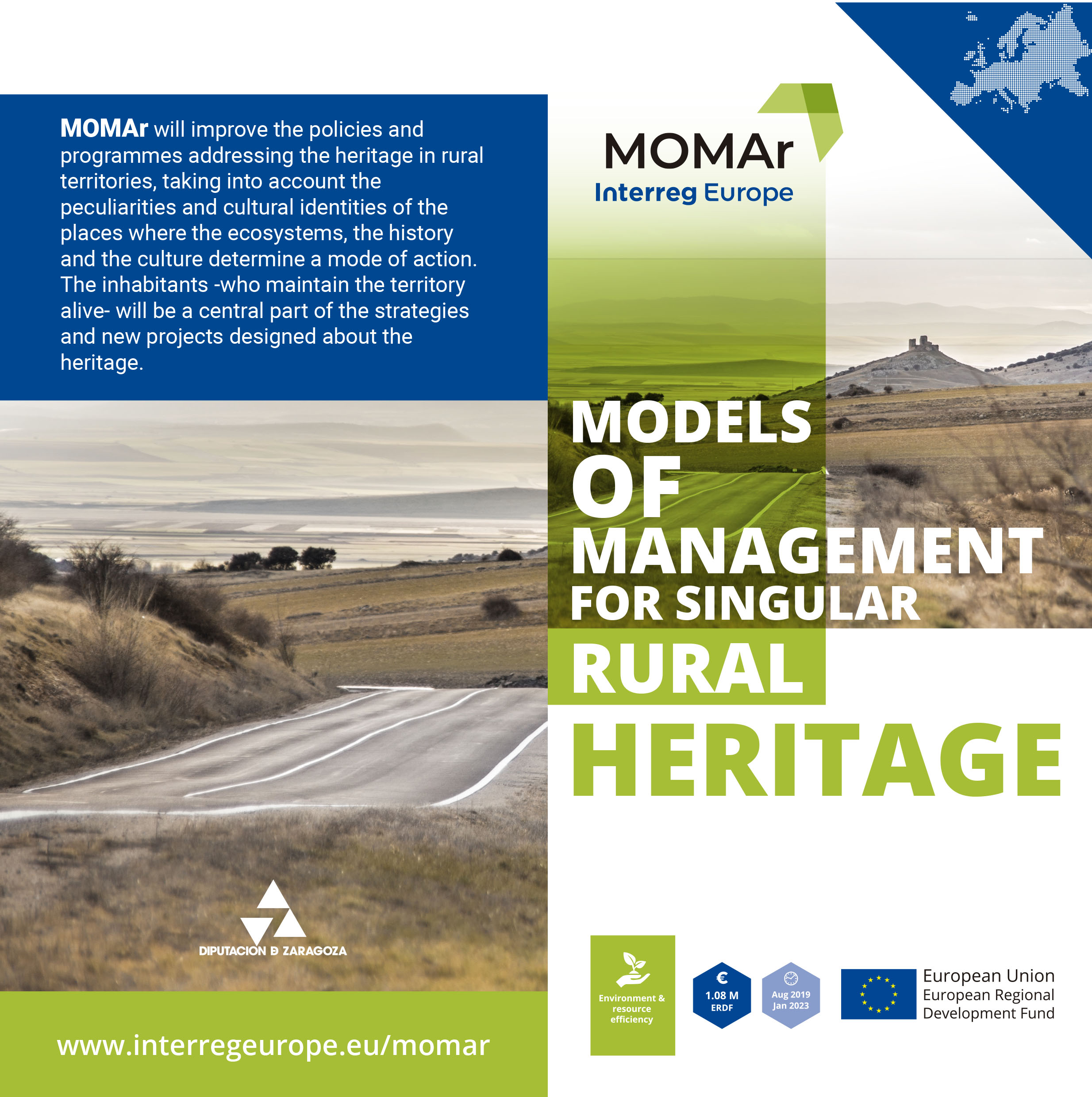MOMAr carried out a successful study visit in the Province of Groningen (The Netherlands) to see first-hand the good practices in heritage management, previously identified in the project. The visit brought together 28 heritage experts from five rural areas of Europe on the 27th and 28th of April. The experience was hosted by The Province of Groningen, and attended by the lead partner the Provincial Government of Zaragoza (Spain), the Territorial Administrative Unit of Mehedinti County (Romania), the Ministry of Regional Development and Transport of Saxony-Anhalt (Germany) and the Regional Development Agency of South Bohemia – RERA a.s. (Czech Republic), together with stakeholders from each country.
This study visit is the third of a total of four and it pursues the exchange of knowledge on heritage management models among European territories. The final objective is the importation of good practices and with it, the development of an Action Plan in which each partner is working on new proposals for the improvement of local projects.
Warm welcome
Before starting the on-site visits, the group of experts was welcomed in the Provincial House by the Dutch team led by Monique Antonis, Head team Heritage, Spacial Quality and Landscape and Richard Veenstra, Senior policy advisor Heritage of the Province of Groningen who also offered a tour to the historical part of the building.
Old heritage, new uses
The rehabilitation of historical heritage for new social and educational uses for the benefit of local communities, through cooperation between public administration and private properties, marked the study visits.
The first stop was Maarhuizen. It used to be an old village built on a dwelling mound. Nowadays, Enne Jans Heerd Foundation is managing the renovation of one of its old farms. Mayke Zandstra and Joost Renzenbrink offered a visit through the building under construction and explained the history of the place as well as its new objective: to create a meeting point for culture and nature, as public as possible. In the same place, Meike Kompaan, policy advisor Heritage of the Province of Groningen, presented the project ‘Heritage Lab’, the pilar of the Dutch Action Plan.
Afterward, the group visited one of the churches of the Groningen Historic Churches Foundation. As Patty Wageman, head of the Foundation, and the advisor, Christiaan Velvis explained to the group, this entity manages 99 churches, most of them, medieval. There, the religious space has become a community place, open to the public and dedicated to social purposes. Proof of this is the exhibition 'Fest! In the West and East', located in a renovated medieval tower, is one of the projects of the School Kerk, an educational program that works to create an intercultural dialogue with kids to generate mutual understanding.
The MOMAr team could enjoy this exhibition that explores celebrations of different religions (Catholic, Jewish and Muslim) through an interactive experience, which seeks to create meeting points between the different faiths, as well as an open and intercultural dialogue among the visitors without prejudices.
The expedition also stopped over the Wadden Sea, the largest tidal flats system in the world, listed by UNESCO as World Heritage for its unique geological and ecological values and its high biological diversity.
During the second day of the study visit, MOMAr focused on Oldambt municipality, next to the border with Germany. This area was considered the breadbasket of the Netherlands decades ago thanks to its fertile land. However, depopulation and the loss of local agriculture have left hundreds of monumental farms abandoned or in serious danger of collapse. In addition to this degradation process, they confront earthquakes, largely caused by gas extraction, and the oxidation of the earth that causes significant land subsidence. The consequence is an enormous historical heritage, in private hands, facing the costly challenge of reconstruction and rehabilitation. Nevertheless, according to the explanation of Judith Toebast, Specialist on monumental farms of the National Cultural Heritage Agency and Rick Brinks, Policy advisor heritage for the municipality of Oldambt, the owners of the farms do not deal with these problems alone, since public administrations are contributing economically and strategically to the preservation of these centuries-old buildings,
The international experts were able to verify this phenomenon first-hand. They did a tour of the region and a visit to two farms that have been rehabilitated and renovated for new uses, especially for tourism, as well as to two churches affected by the great earthquake of 2012 and currently rehabilitated thanks to the action of the Groningen Historic Churches Foundation. Jur Bekooy, Advisor of the Foundation introduced the cases of study.
After this trip, MOMAr is preparing for its last study visit next June to Mehedinti County, Romania.












